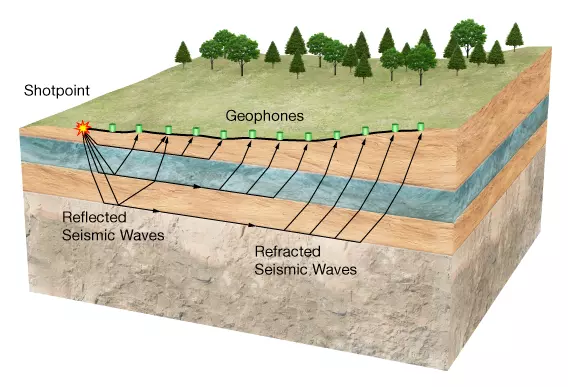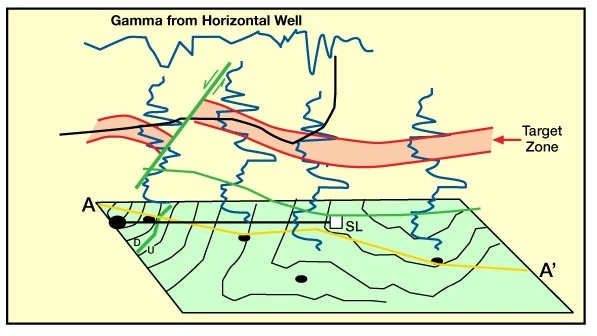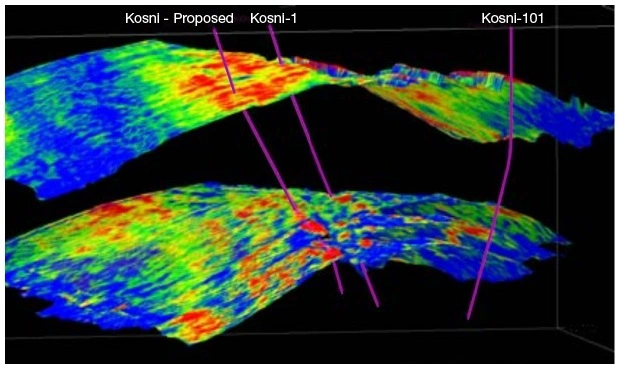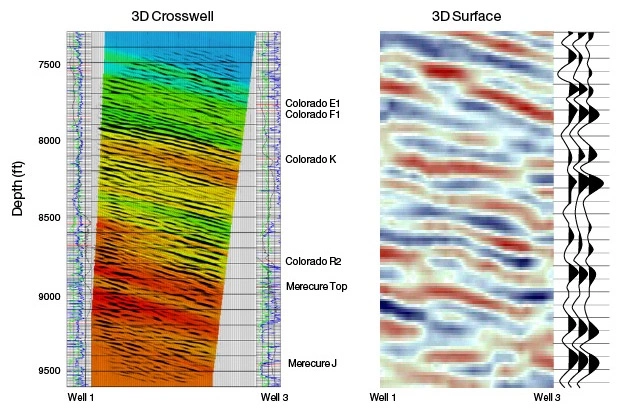Learning Objectives
After completing this topic “Seismic Methods“, you will be able to:
- Explain wave interaction and seismic method.
- Describe seismic wave types.
Introduction to Seismology
Seismology
Seismology refers to the study of how energy in the form of seismic waves moving through the earth’s crust interacts with various rock types. In the earth’s subsurface, seismic energy travels in waves spreading out as semicircular wave fronts like ripples on a pond surface when you drop a pebble in the water (Animation 1). Those ripples will continue to travel in a concentric manner in the water until they become obstructed by an object of different density, such as a shoreline or rocks. Now imagine how seismic waves would respond when interacting with different rock types as they travel through the subsurface.

Wave Interaction
There are several observable actions when seismic waves interact with the subsurface. The two basic interaction types include reflection and refraction. The refraction and reflection of seismic energy, at surfaces where there is a significant density contrast, follows exactly the same laws that govern the refraction and reflection of light through prisms (Figure 1).

Reflection
Reflection seismology works like sonar (Animation 2). A sound pulse is sent into the earth where it reaches a boundary target with multiple acoustical properties, such as sound, speed, and material density. When the pulse reaches a boundary target, such as the boundary between two different rock types, energy reflects back toward the surface. That energy is captured as data through the use of geophone recording devices.
Animation 2
The energy arriving at a geophone in a seismic study is described as having traveled a raypath (Animation 3). The raypath is the direction along which wave energy spreads through the earth, where the raypath travels perpendicular to the native wave. Therefore seismic energy is refracted and reflected at rock interfaces with different velocities, and different densities, in the earth’s subsurface.
Animation 3
Refraction
Refraction seismology (Animation 4) is similar to reflection seismology in that a sound pulse is sent into the earth where it reaches a boundary target. However, unlike reflection seismology, when the pulse reaches a boundary target, some of the energy is refracted, signifying that the waves are emitted in multiple directions. Some of this energy moves into surrounding rock or soil layers and moves horizontally. The remaining energy is refracted to the earth’s surface, where it can be captured by geophones.
Animation 4
Refraction and Reflection Comparison
For both reflection and refraction methods, sound velocities can increase with increasing depth. Arrival times of different wave paths at designated geophones at the earth’s surface can be used to calculate the subsurface structure of the individual boundary target. These calculations can include details such as subsurface structure thickness and sound velocity.
The main difference between refraction and reflection seismology is that refraction seismology benefits the detection of overall structures and unit thickness in the subsurface, while reflection seismology is better suited to detecting smaller details within the unit (Figure 2). These could be thinner interbedded layers, or small scale faults, associated with those subsurface structures.

 Petro Shine The Place for Oil and Gas Professionals.
Petro Shine The Place for Oil and Gas Professionals.



